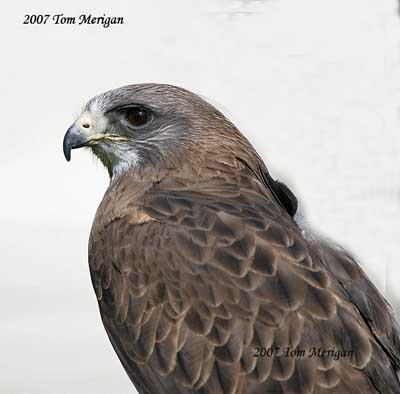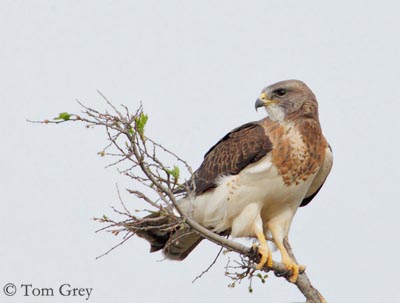
Swainson’s Hawk
Buteo swainsoni
Accipitriforme Order – Accipitridae Family
BIOMETRICS:
Length: 50-55 cm
Wingspan: 120-135 cm
Weight: M: 820 g – F : 1130 g
LONGIVITY: Up to 16 years
DESCRIPTION:
Swainson’s Hawk has variable colour.
The birds with light colour morph have white patches on the forehead, throat and belly. The rest of the body is dark brown.
Fr : Buse de Swainson
All : Präriebussard
Esp : Busardo Chapulinero
Ital : Poiana di Swainson
Nd : Prairiebuizerd
Russe : Канюк Свенсона
Sd : Prärievråk
Photographers:
Tom Grey
Tom Grey's Bird Pictures
Tom Merigan
Tom Meriganís Photo Galleries
Pete Moulton
Pete Moulton Photography
Text by Nicole Bouglouan
Sources :
HANDBOOK OF THE BIRDS OF THE WORLD Vol 2 by Josep del Hoyo-Andrew Elliot-Jordi Sargatal - Lynx Edicions - ISBN: 8487334156
A GUIDE TO THE BIRDS OF COLOMBIA by Steven L. Hilty and William L. Brown - Princeton University Press – ISBN 069108372X
A GUIDE TO THE BIRDS OF MEXICO AND NORTHERN CENTRAL AMERICA by Steve N. G. Howell, Sophie Webb - Oxford University Press - ISBN: 0198540124
HAWKS, EAGLES AND FALCONS OF NORTH AMERICA by Paul A. Johnsgard - Smithsonian Institution Press - ISBN: 1560989467
Wikipedia (Wikipedia, The Free Encyclopedia)

The birds with dark colour morph have a dark brown body, with white undertail coverts.
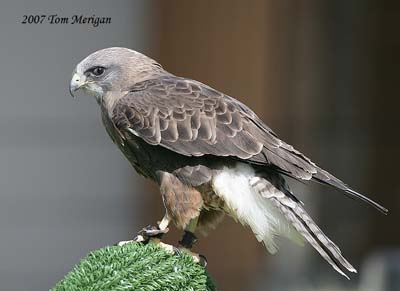
Variations between these two extremes have been observed, with a rufous morph.
It can be confused with a Red-tailed Hawk, but the Swainson’s Hawk has longer wingspan and more variation in colour. It has long, narrow and pointed wings.
In all plumages, it has relatively small head and unusually small feet. The bill is short and dark, with yellow cere. Iris is dark brown. It has yellow legs in all plumages.
Immature has white breast with dark streaks, and some white patches on the back.
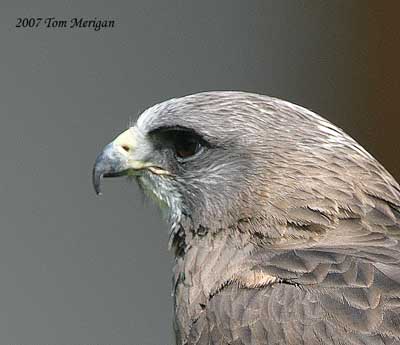
VOICE: SOUNDS BY XENO-CANTO
Swainson’s Hawk’s typical call is a far-carrying, long and whistling “kieeer”.
HABITAT:
Swainson’s Hawk prefers open grasslands and desert-like habitats. It is often perched on a fence post, in open range. It also inhabits agricultural areas, and likes to follow farmer’s tractors, searching insects or rodents.
RANGE:
Swainson’s Hawk spends most of the year in western United States, extending into southwest Canada, and south to west Texas. It migrates over Central America in winter, through Argentina pampas areas.
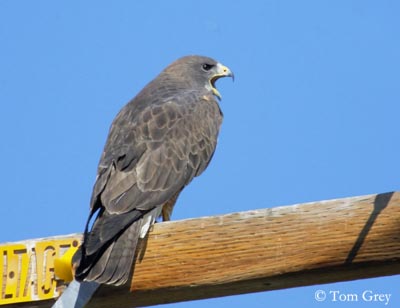
BEHAVIOUR:
Swainson’s Hawk is highly territorial towards others hawks. But, out of breeding season, it lives peacefully with others Swainson’s Hawks and birds.
These hawks form flocks of up to 100 when migrate, and during the winter. Communal roosts of thousands have been documented in Argentina.
During the mating season, the male stays with its mate. Courtship display occurs above or near the nest site. It consists of circling by the pair, followed by steep dives by the male. It can terminate in an ascent to an elevate perch.
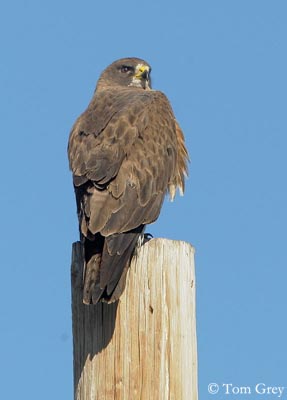
The Swainson’s Hawk is adapted for aerial foraging, or coursing over open areas. When fires occur, it is often perched at the edge of the fire, waiting for preys chased by the danger.
Swainson’s Hawk is highly migratory. To reach its wintering areas in Argentina, this bird follows its route through Central America, with some stop-over. These raptors migrate in large flocks
FLIGHT:
When soaring, Swainson’s Hawk often holds the wings slightly pressed forwards, and raises them high forming a distinct V. Sometimes, it teeters from side to side, in vulture-like flight.
REPRODUCTION:
The breeding season starts by building the nest, in March and April. It is usually built in trees, shrubs, on the ground, or on the top of utility poles. The nest is an open platform. Materials include sticks and plant parts. It is built below the canopy, and towards the outer ends of limbs.
Swainson’s Hawk is monogamous. A breeding pair may return to a previous nesting site.
When the nest is complete, the female lays 2 to 4 whitish eggs, with brown flecks. Male and female incubate the eggs during about 30 days. The young stay in the nest for 30 days more.
Most juvenile migrate with their parents, but there are some groups that do not migrate the first winter.
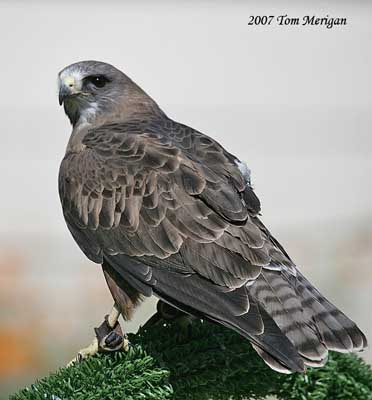
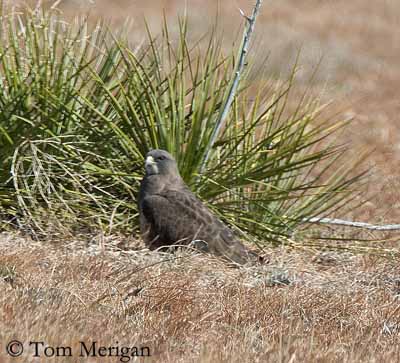
DIET:
Swainson’s Hawk eats whatever it can find. In North America, its diet consists of insects, small mammals and birds, and sometimes reptiles and amphibians.
In winter, in Argentina, it feeds mainly on insects (grasshoppers and crickets).
PROTECTION / THREAT / STATUS:
Swainson’s Hawk is considered as threatened, because is killed by the pesticides used in agricultural areas in Argentina. This use must be stopped, but even the farmers are in support of saving the birds, this effort is a daunting task.
